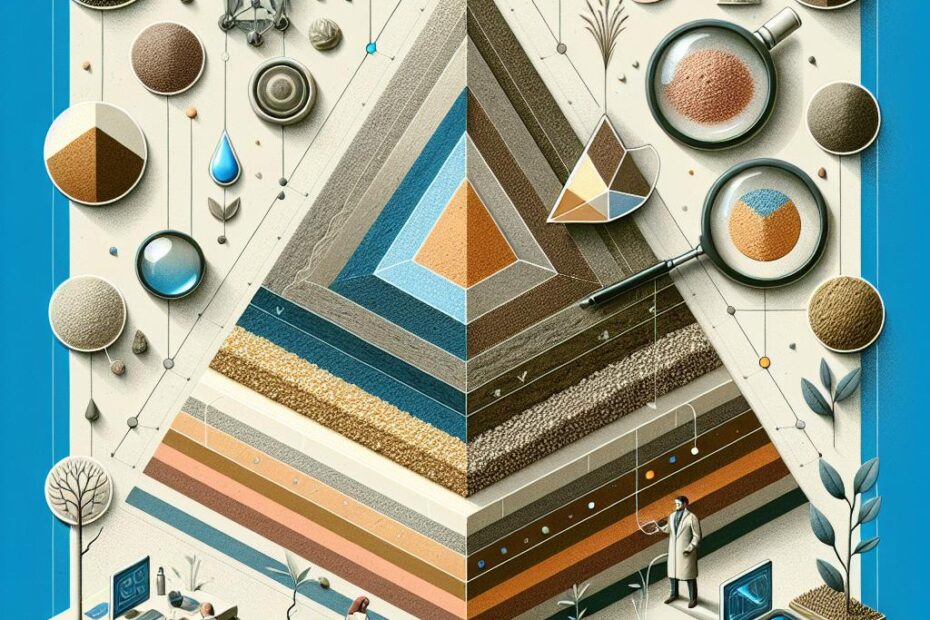Are you looking to improve your understanding of soil types and how they can impact your gardening or farming practices? Then look no further than the soil texture triangle. This tool is an essential resource for anyone working with soil, as it helps determine the composition of soil based on its texture and helps in making informed decisions on how to manage and improve the soil quality.
In this comprehensive guide, we will explore what the soil texture triangle is, how to use it effectively, and the benefits it can bring to your gardening or farming endeavors. So let’s dive in and explore this valuable tool together.
What is the Soil Texture Triangle?
The soil texture triangle is a graphical representation that classifies soil into three major categories based on its particle size distribution: sand, silt, and clay. These three categories are further broken down into different combinations to create a textured triangle diagram. By determining the percentage of each soil particle size in a sample, you can locate the composition of the soil on the triangle and identify its specific texture.
How to Use the Soil Texture Triangle
Using the soil texture triangle may seem daunting at first, but with a step-by-step approach, it can become a valuable tool in your soil analysis toolkit. Here is a simple guide on how to use the soil texture triangle effectively:
-
Determine the Soil Texture: Start by collecting a soil sample from your garden or farm and separating it into its individual components – sand, silt, and clay. You can do this by using a soil sieve to separate the particles based on their size.
-
Calculate the Percentage of Each Soil Component: Once you have separated the soil into its individual components, calculate the percentage of sand, silt, and clay in the sample. You can do this by weighing each component and dividing it by the total weight of the sample.
-
Locate the Soil Texture on the Triangle: Using the percentage values of sand, silt, and clay, locate the point of intersection on the soil texture triangle diagram. This point will determine the texture of the soil, whether it is sandy, loamy, or clayey.
-
Interpret the Results: Once you have located the point of intersection on the triangle, you can interpret the results to understand the soil texture and its properties. For example, sandy soil drains quickly but lacks nutrients, while clayey soil retains water but can become waterlogged.
Benefits of Using the Soil Texture Triangle
There are several benefits to using the soil texture triangle in your gardening or farming practices. Some of the key advantages include:
- Improved Soil Management: By understanding the texture of your soil, you can better manage it by choosing the right crops, fertilizers, and irrigation methods to optimize plant growth.
- Enhanced Soil Health: Identifying the texture of your soil can help you make informed decisions on how to improve its structure, fertility, and drainage to promote healthy plant growth.
- Increased Productivity: By tailoring your soil management practices to the specific texture of your soil, you can increase crop yields and overall productivity on your farm or garden.
Practical Tips for Using the Soil Texture Triangle
To make the most out of the soil texture triangle, here are some practical tips to keep in mind:
- Ensure you have a representative soil sample from your garden or farm to accurately determine its texture.
- Take multiple samples from different areas to account for variations in soil texture across your site.
- Use a soil texture analysis kit or consult a soil testing laboratory for precise results if needed.
Conclusion
In conclusion, the soil texture triangle is a valuable tool for anyone working with soil in gardening or farming. By understanding the texture of your soil and how to use the triangle effectively, you can make informed decisions to improve soil health, enhance productivity, and optimize plant growth. So why not incorporate the soil texture triangle into your soil analysis toolkit today and reap the benefits it can bring to your soil management practices.
